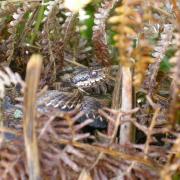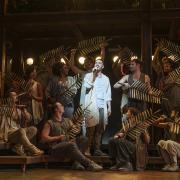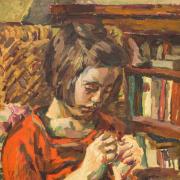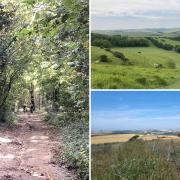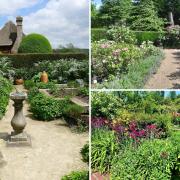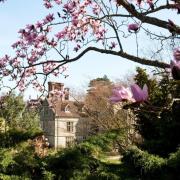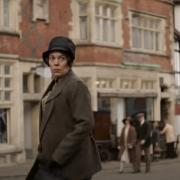In the 1880s, the celebrated Victorian artist Edward Burne-Jones bought a cherished weekend retreat in the sleepy coastal village of Rottingdean, where he immersed himself in the seasonal round and designed a fine set of stained glass windows.
ON A perfect autumn day in 1880, Georgiana Burne-Jones, the wife of the celebrated Victorian artist and designer Edward Burne-Jones, set off on a house-hunting expedition over the Sussex Downs to Rottingdean. “The little place lay peacefully within its grey garden walls and the sails of the windmill were turning slowly in the sun,” she later recorded wistfully in her diaries, describing a rural idyll as yet unsullied by urban sprawl and development.
Entering the village from the north, the road took her straight to the door of an unoccupied three-storey house on the green, then known as Aubrey House. Deciding that the simple seaside cottage would suit them well, she purchased it on the spot and it was to be their weekend retreat for the next 18 years – a place where Burne-Jones could escape the London social whirl.
He had need of such a retreat. An inveterate workaholic, he was one of the most versatile artists of his age. Besides his large-scale paintings and whole sequences of pictures, he made thousands of designs for stained glass, embroidery and tapestry, as well as hand-painted furniture, clothes, shoes and jewellery. He even started a campaign for the reform of piano design and, in collaboration with the craftsman and designer William Morris, made numerous illustrations for books.
He had been looking for a house by the sea for several years, a holiday home for the family and a place within easy reach of London, where he “might run down at any moment and find quiet”. And as Fiona MacCarthy reveals in her captivating new biography of the artist, The Last Pre-Raphaelite: Edward Burne-Jones and the Victorian Imagination, he took to the house immediately, referring to it fondly as “the little funny place” with its “whitewashed walls and scant furniture.
Rechristening it North End House in homage to The Grange, their London home on North End Road, he hired the Arts and Crafts architect WAS Benson to adapt the building to their needs, and then set about making regular trips to the East Sussex coast.
“It was the first time Burne-Jones had lived outside a city and he loved the change of pace of a village that still felt apart and relatively primitive, without gas and railway,” says MacCarthy. “The daily omnibus from Brighton took 40 minutes and when a stranger arrived on the green, local village children were apt to stick their tongues out.
“But it was not that Rottingdean was absolutely quiet. As he discovered, the countryside had its cacophonies of sound from two in the morning when the first cock started crowing to ten at night when the last yelling baby was put to sleep. But Rottingdean noises were different from Kensington noises, and this he found refreshing.”
Burne-Jones felt enriched and soothed by the traditions of country life, and he never tired of the view from his studio bedroom overlooking the village pond to “the little grey church on the windy hill”. Indeed, as life at their London home became more muted, Rottingdean became the new centre of gravitation, and in 1889 they acquired Prospect House, the neighbouring property to the south, partly to ward off “the likelihood of very tiresome neighbours”.
Once again, WAS Benson was called in, this time to build a new entrance and studio, and Burne-Jones commissioned hand-made oak furniture from Shropshire, as well as a cupboard, clock and medieval-style oak chair, though he resisted cushions, maintaining that it was good for him not to give way to luxuries, “but to learn hardship and endurance”.
The piece de resistance was a settle for the ‘pothouse room’, converted from the old brick floor kitchen and Burne-Jones’ greatest source of happiness. Here, he created his own place of escape, a male retreat known as ‘the Merry Mermaid’ where he and his cronies could drink, smoke and ‘rattle the dice box’.
“His model for the decor was that of the snug bar of an old country inn with whitewashed walls,” says MacCarthy. “Beside the settle there was an armchair, a black oak long table and country-style dresser “full of the madcappest pottery”, ordinary German earthenware painted in exuberant colours that Burne-Jones loved for its authentic tastelessness. In winter, the fire would crackle in the grate and he felt at home and a little bit defiant, telling a friend: ‘Georgie [as Georgiana was affectionately known] says it is very overdone and crowded. I don’t think so – it is the cosiest nook in the world.”
His newly created garden was also a great comfort and in the summer he would drink in the pungent scent of the sweet briar rose and honeysuckle, while listening to the buzz of the fine fat bees and watching the swifts speeding beyond the rooftops.
He was discovering, late in life, the simple bucolic pleasures of the Sussex countryside and it became a great source of inspiration. For it was here, in 1882, that he started on The Flower Book, a project especially associated with Rottingdean, described by Georgie as “the most soothing piece of work that he ever did”.
It was less a book of accurate botanical drawings than a sequence of small watercolour paintings, each six inches across, in which the name of a flower provided the inspiration for the image. Love in a Mist, for example, showed Love captured within a swirling cloud, struggling to be released.
But it wasn’t all work and no play for the sociable artist. “Intimate and unexacting friends” often came to visit, and it was at the parish church of St Margaret that Burne-Jones’ cherished daughter Margaret was married to the artist John William MacKail. He later donated a fine series of commemorative stained glass windows to the church, including one in the chancel depicting St Margaret herself, which he conflated with the image of his daughter.
As time rolled by, grandchildren, great nieces and great nephews also began to tumble down to Rottingdean, where they frolicked on the beach or crept into the church, which they viewed as an extension of their home because it contained so many of their grandfather’s windows.
The precocious Angela, who went on to become the popular novelist Angela Thirkell, was Burne-Jones’ favourite grandchild and he indulged her by writing wonderful illustrated story letters. He also painted a guardian angel at the foot of her bed and on finding her disconsolate in the ‘punishment corner’ of the nursery, having been placed there by her irate nanny, he painted a cat, a kitten playing with its mother’s tail and a flight of birds to entertain her whenever she was punished again.
Sadly, the Rottingdean idyll was not to last and in 1898 Burne-Jones died after a lingering illness. He was cremated at Woking, the only crematorium in Britain at that period, and on the eve of his funeral his ashes were taken to St Margaret’s in Rottingdean and placed before the altar, where the male members of the family kept vigil.
The burial place had been chosen long before in a corner of the churchyard visible from the windows of North End House. Georgie, in a winsome moment, had declared: “If you die first, you know, we shall still be near to one another, and I can still say: ‘How do you do?’ to you from my window which just looks out on to you.”
The Burne-Jones children, Philip and Margaret, carried the box with the ashes and lowered it into the grave, lined with moss and roses. Then Georgie followed, before all three sprinkled in some earth. Finally, Georgie placed her own last offering of purple pansies – ‘heartsease’ – in her husband’s grave, and knelt down to pray.
There was “no mobbing; no jabber; no idiotic condolences”, wrote Rudyard Kipling, a close relative, before reflecting: “His work was the least part of him. It is him that one wants – the size and the strength and the power and the jests and God-given sympathy of the man.”
But perhaps the most moving tribute came from Kipling’s Rottingdean gardener. “What struck me about him was his humanity,” he said. “There aren’t too many humane men in the world today.” And from then on he gave himself the practical task of watering the grass on Burne-Jones’ grave.
The Last Pre-Raphaelite: Edward Burne-Jones and the Victorian Imagination by Fiona MacCarthy is published by Faber & Faber at �25.



